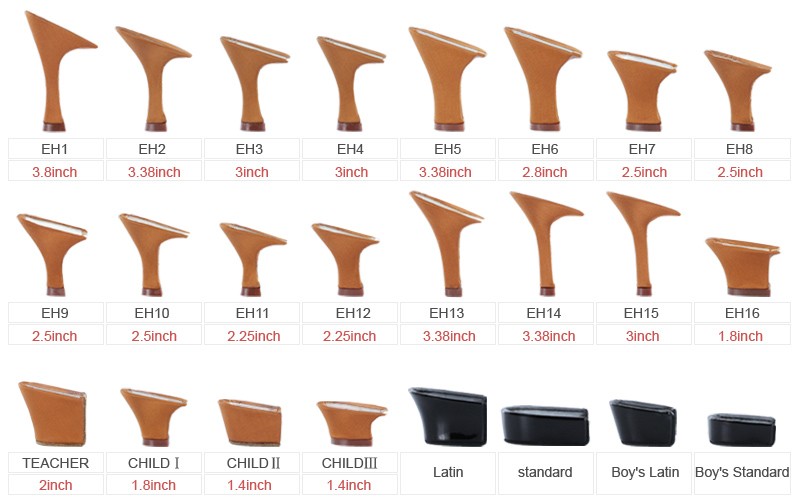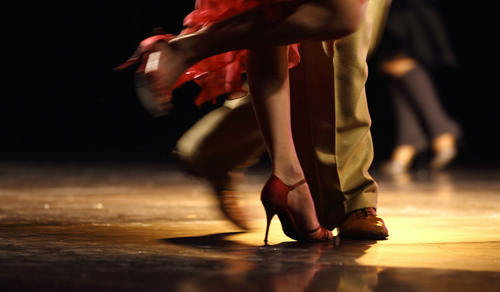Finding the Perfect Pair of Dance Shoes for Your Ballroom Lessons
Unquestionably, ballroom dancers of all levels experience a love-hate relationship with their dance shoes. While the right pair can make you feel like you can fly, the wrong pair can send you crashing back to reality. Especially susceptible to the new shoes blues, dancers can spend copious amounts of time searching for the perfect fit. Blood, sweat and tears are shed trying to break the molds of ill-fitting dance shoes to our calloused feet.
Whether you’re wearing them to a private lesson, ballroom workshop, dance practice, ballroom competition or an all night social dance party, your shoes should feel as good as your home slippers. If they don’t, you’ve yet to find your perfect fit. But the seemingly elusive perfect fit does exist and fortunately, Briora’s dance instructors are more than willing to help you find it!
With the increasing number of quality brands and vendors available (International, Supadance, Ray Rose, AIDA, DSI, Capezio, Star and many more), it’s easy to get overwhelmed. Everyone has his or her own preference, because everyone’s feet are different! Here are some of my tips—gathered from wearing down hundreds of shoes over my 16 years of dancing—to aid in your journey.
Sizing
Each brand of dance shoes has slightly different sizing specifications. It’s especially important to pay attention to sizing charts and conversions when ordering ballroom shoes online and from different countries. European and U.K. sizing is different from U.S. sizing, and more often than not, the size of your dance shoes will not match the size of your regular shoes. That’s perfectly normal!
A great rule of thumb for ladies is to order Standard or Smooth dance shoes in at least a half-size larger and Latin dance shoes in at least a half-size smaller. Whenever you are dealing with close-toed shoes, you must take care to leave room for your toes, especially since Standard and Smooth dance shoes taper off to a point. When it comes to open-toed shoes, it often helps to have your toes spill over the edge of the dance shoe, giving you more freedom to grip the floor as you tackle your Cha-Cha or Rumba walks.
For gentlemen, the task is easier. Because men’s shoes are not as stiff as ladies shoes, they are inherently more flexible, and more likely to mold to your foot shape. No need to deviate from your standard shoe size to feel comfortable doing a perfect Foxtrot feather step.
Heel Size

Another great rule of thumb for ladies (unless there is a big height gap between you and your partner) addresses heel size. For Standard and Smooth shoes, I suggest getting a lower heel (2 inches is my ideal), and for Latin shoes a higher one (3 inches works for me).
A lower heel for Standard and Smooth styles facilitates natural swing action, whereas a higher heel may restrict you from being able to soften into your ankles with ease. You want your weight to move freely from your toes to your heels, and higher heels tend to focus your weight on your toes.
In Latin, the higher heel is actually a benefit, helping you place your weight over the balls of your feet, allowing for more nimble, speedy footwork. Not to mention, it’s much easier to point your toes! As always, ask your dance instructor for advice before picking a heel height—they know what your dancing needs and what shoe will work with you instead of against you.
The aforementioned rule also applies to gentlemen—a very low heel is preferred for Standard and Smooth styles, whereas a higher heel is appropriate for Latin. Next time you browse through dance shoes, pay attention to the heel shape—it tends to be square for Standard and Smooth shoes, but more triangular for Latin.
Straps for Ladies

When it comes to Standard shoes, I’ve always preferred having a strap holding my shoe together, as opposed to a plastic band or no strap at all. For me, the strap provides a sense of security, and helps me distribute my weight equally over the entirety of my foot. Plus, I never have to worry about my shoes falling off during my dance lessons or, even worse, at ballroom competitions.
In the case of Latin dance shoes, I’ve always preferred T-straps to ankle straps. Not only do my feet feel more secure with the T-strap protecting against wobbly ankles, but I have more power to direct weight distribution over my foot. If you move the vertical strap towards the inside of your foot, for example, your weight will follow. Ankle straps, while less stable, allow your foot to be more flexible, often resulting in a more beautiful pointed foot. Take the time to experiment with both and ask your dance teacher which style best suits your feet.
Where to Look

If you’re a competitive ballroom dancer, competitions are great opportunities to try on and experiment with many different brands and styles of shoes from attending vendors. If you don’t frequent competitions, you can order shoes online, directly from each vendor. Often times, you can find lightly worn or brand new shoes on Ebay from more high-end brands (like International or Ray Rose) at drastically reduced rates.
You can also visit local dance shops, like Star Dance Shop in Lynwood, which carries many brands and also puts in special orders. Briora has a great stock of Smooth, Ballroom, Latin and practice shoes for both men and women, so you can try a pair on and test them on our floor during your dance lesson. Just visit our dance shop, which carries Capezio and Star brands, or ask our receptionist for help. While we carry several sizes, we can also put in a special order if your size is unavailable.
Practice vs. Competition

Once you’ve found the perfect pair of dance shoes, make sure to buy two pairs. Dedicate one pair for your practice and one pair for dance competitions or special occasions, like weddings or parties. You know how they fit, so there will be no surprises. If you’re a competitive dancer, practice and take dance lessons in your competition shoes the week leading up to the event to break them in. After the first time, dedicate them only to competitions—dirty shoes distract the judges from your dancing (and are often a pet peeve!).
As is always the case, practice makes perfect when looking for dance shoes. So, if your first pair is especially incompatible with your feet, don’t despair. Follow these tips, talk to your instructors, and keep trying!


